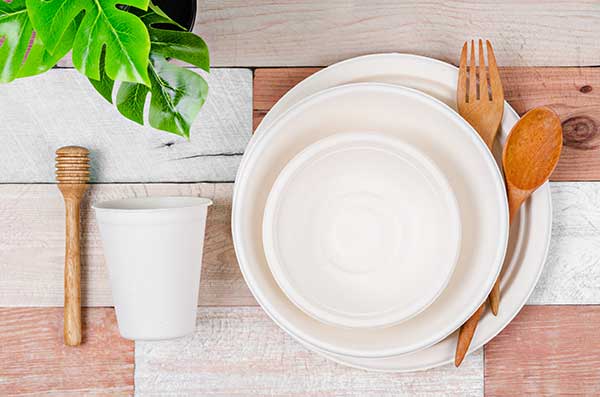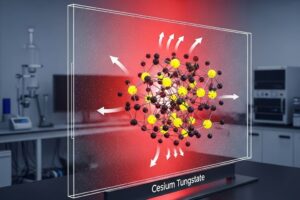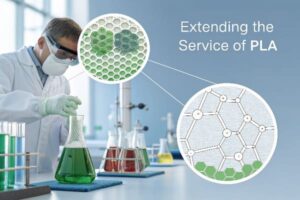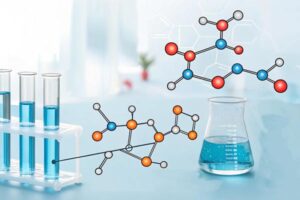1. Introduction
Polylactic acid (PLA) and poly(butylene adipate terephthalate) (PBAT) are two biodegradable polymers that have gained wide attention. PLA, made from renewable resources such as corn starch, is recognized for its good mechanical properties and high biodegradability. Its applications include packaging, 3D printing, and biomedical fields. On the other hand, PBAT boasts excellent flexibility, processability, and biodegradability in various environments, making it perfect for film – making and flexible packaging applications.
However, when PLA and PBAT are blended, they can present a major challenge – poor compatibility. Immiscibility causes phase separation, detracting from the overall blend performance. Chain extenders offer an effective solution to increase the compatibility in PLA/PBAT blends, expand their application scope, and improve their overall performance.
2. Characteristics and Blending Challenges in PLA and PBAT
PLA is a semicrystalline thermoplastic polyester that has high strength and stiffness but is relatively brittle. This brittleness limits its use in applications requiring high toughness. Its biodegradability is a significant advantage as it can decompose under appropriate conditions into environmentally – friendly by – products.
PBAT, a random copolyester, is highly flexible with good elongation at break. Additionally, its processability enables easy extrusion and film – blowing. However, its mechanical strength is relatively lower compared to PLA.
When PLA and PBAT are mixed together, their distinct chemical structures and molecular chain conformations result in poor compatibility. The immiscible phases cause large – scale phase separation, which negatively impacts mechanical properties, such as decreasing tensile strength while increasing brittleness. It also affects the processing performance, making uniform processing challenging.
3. The Mechanism of Chain Extender
Chain extenders are typically multifunctional compounds with high levels of reactivity. Their reactive groups include epoxy, isocyanate, or anhydride groups. For instance, epoxy – based chain extenders can interact with the carboxyl and hydroxyl end – groups of PLA and PBAT.
The reaction mechanism of chain extenders is as follows: their reactive groups interact with the end – groups in PLA and PBAT. When using an epoxy – based chain extender, the epoxy rings open up to react with the carboxyl groups of the polyester chains via esterification – type reactions. They can also react with any hydroxyl groups present. Through these reactions, covalent bonds between PLA and PBAT chains are formed, creating a “bridge” between them.
The formation of covalent bonds between PLA and PBAT greatly improves their interfacial interactions. Previously immiscible polymers become connected at the molecular level, reducing phase separation and enhancing the compatibility of the blends. Furthermore, the improved interfacial adhesion allows for better stress transfer between the phases, enhancing the mechanical properties of the blends.
4. Impact of Chain Extender on Properties of PLA/PBAT Blends
Chain extenders can significantly improve the mechanical properties of PLA/PBAT blends. For example, they can increase the tensile strength. The covalent bonds formed by chain extenders help transfer stress more efficiently between the PLA and PBAT phases. As a result, the blend can withstand greater tension before breaking.
Toughness is also enhanced. The brittleness of PLA is mitigated by the flexible PBAT phase, and the chain extender further strengthens their interaction, enabling better energy dissipation during deformation. This leads to an increase in the elongation at break, making the blend suitable for applications that require both strength and flexibility, such as packaging films.
Thermal Properties: Chain extenders can affect the thermal properties of PLA/PBAT blends. By restricting the molecular chain mobility to some degree, they increase the thermal stability of the blend. For example, the onset degradation temperature might rise, which is advantageous when processing at higher temperatures without significant quality degradation.
Processing Properties: Concerning processing properties, chain extenders can significantly enhance the melt – flow behavior of PLA/PBAT blends. They decrease phase separation in the melt state, resulting in improved flowability during extrusion, injection molding, and blow – molding processes, thus facilitating the production of products with consistent quality.
5. Conclusion
Chain extenders play an essential role in improving the compatibility of PLA/PBAT blends. By reacting with the end – groups of both polymers to form covalent bonds and enhance the interfacial interaction between them, chain extenders reduce phase separation and significantly improve the mechanical, thermal, and processing properties of the blends.







